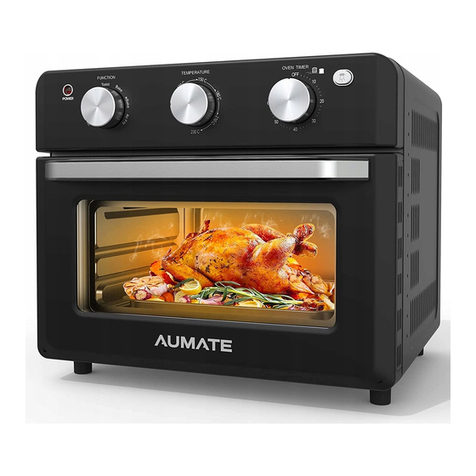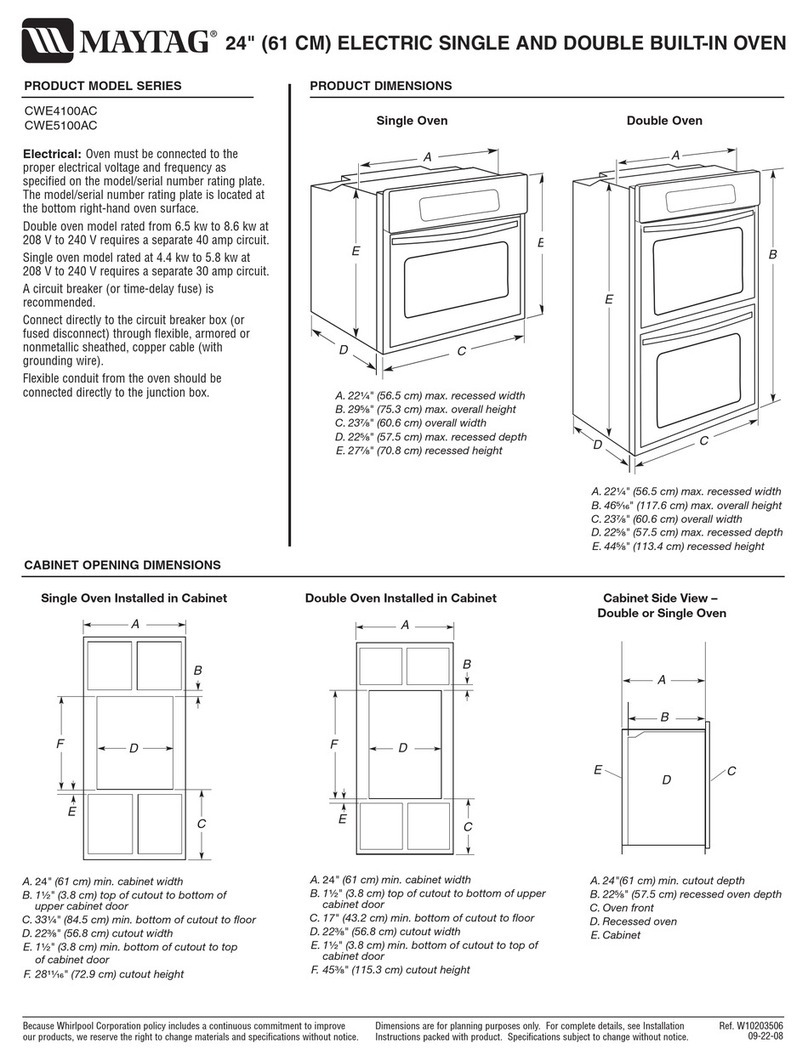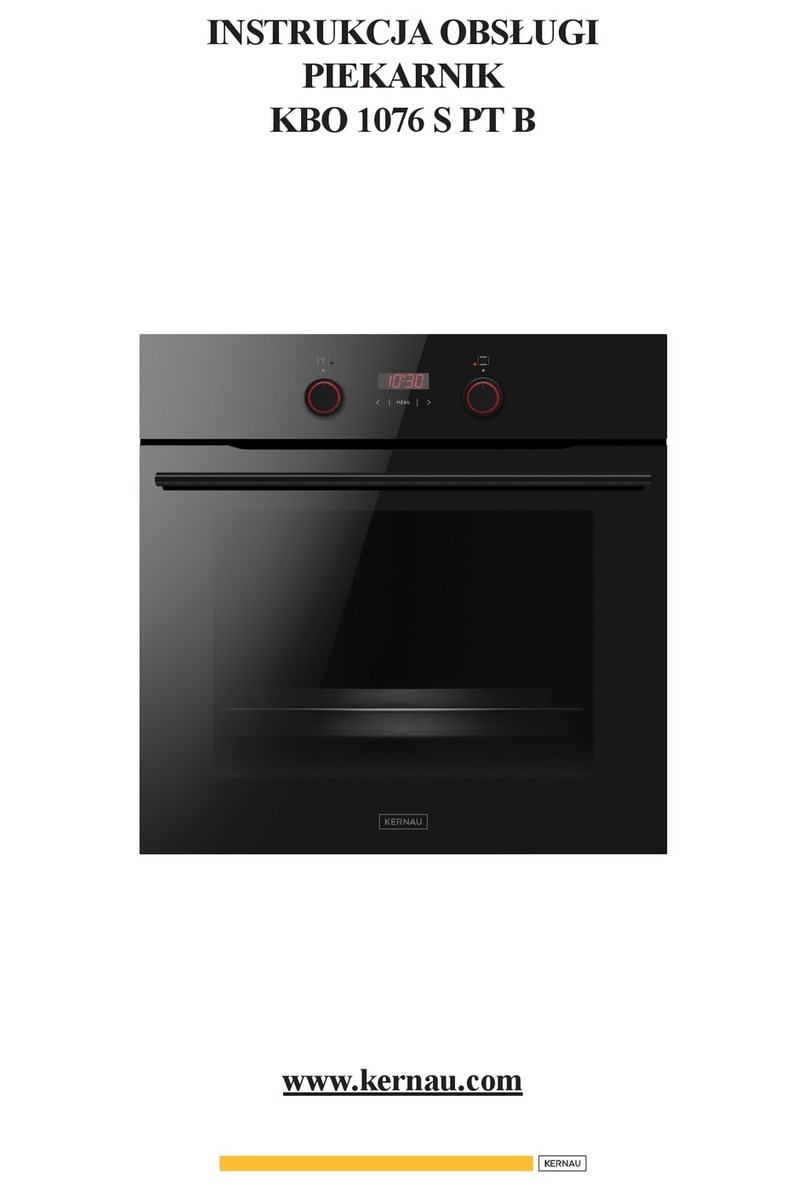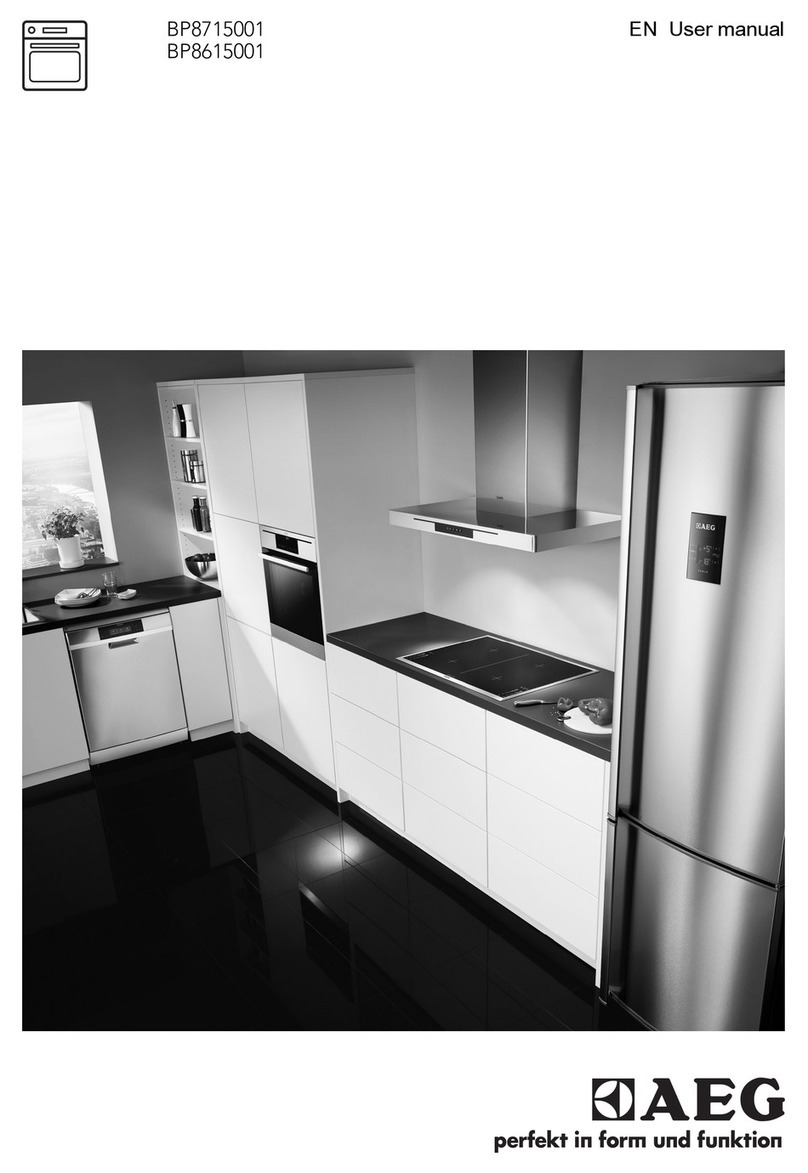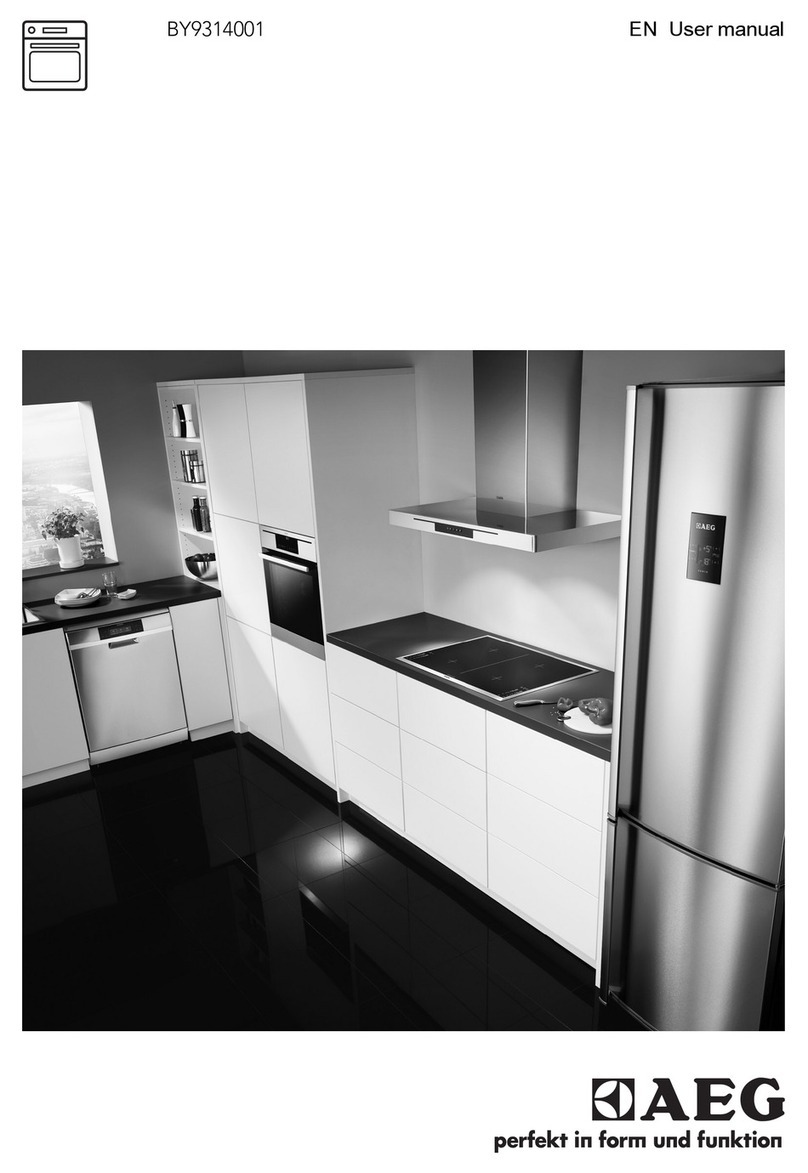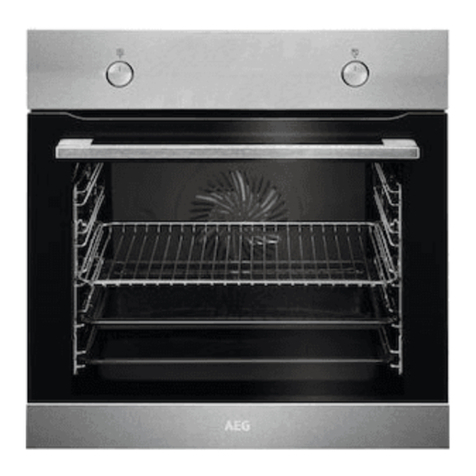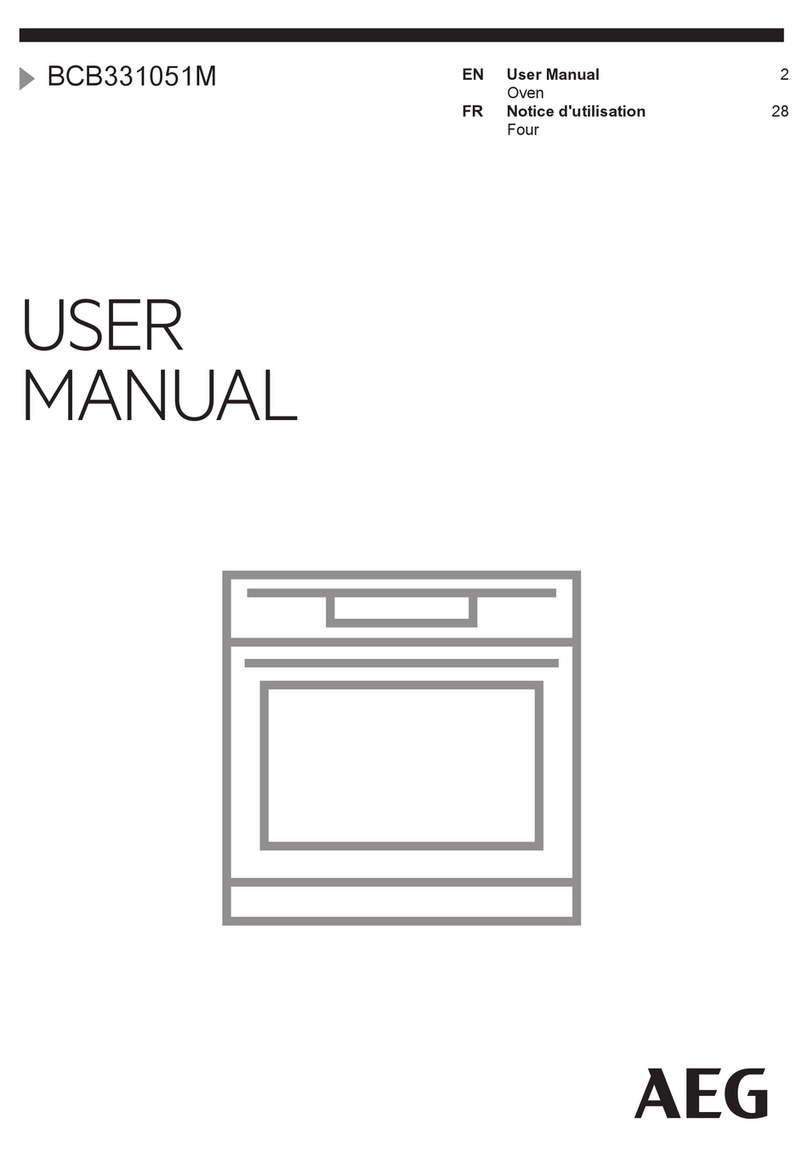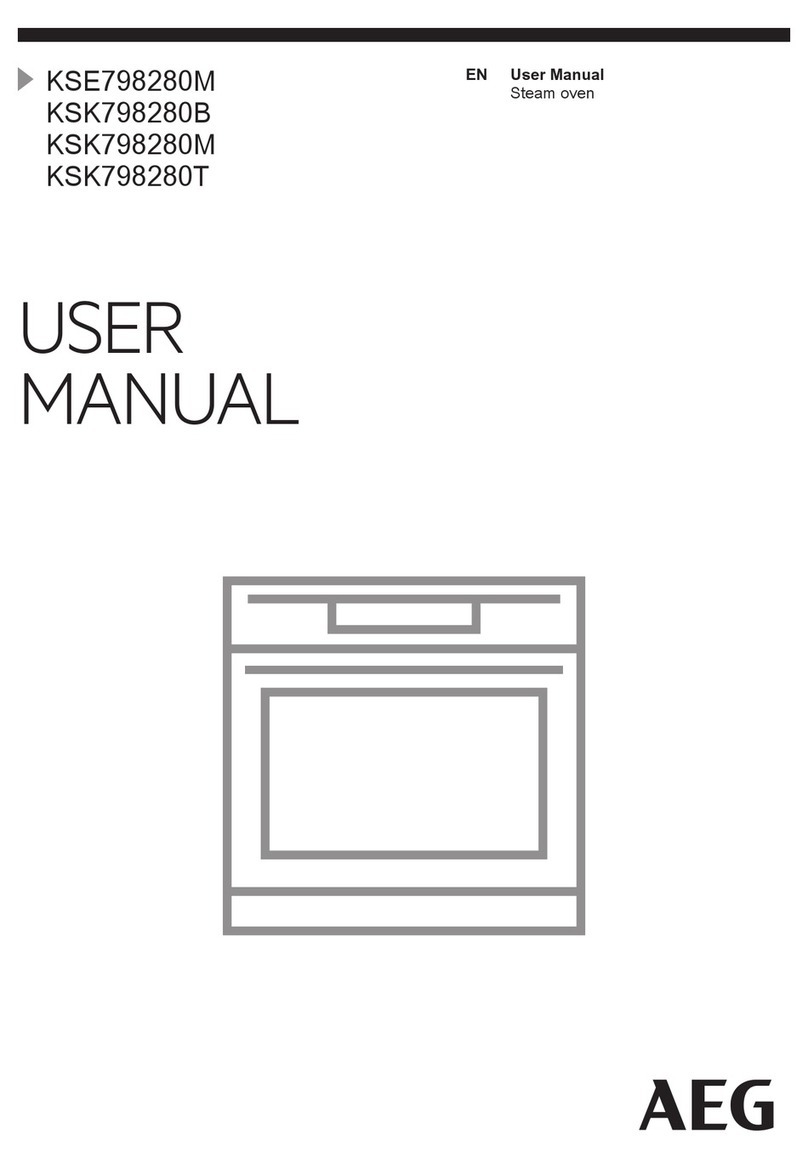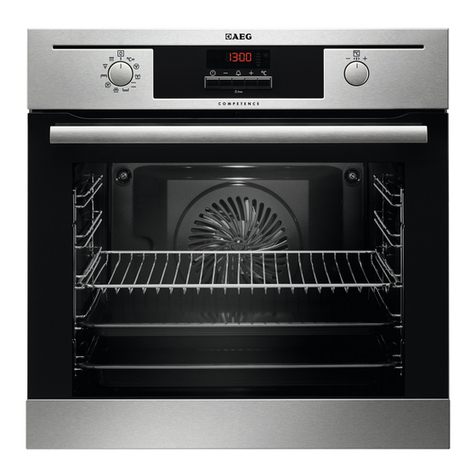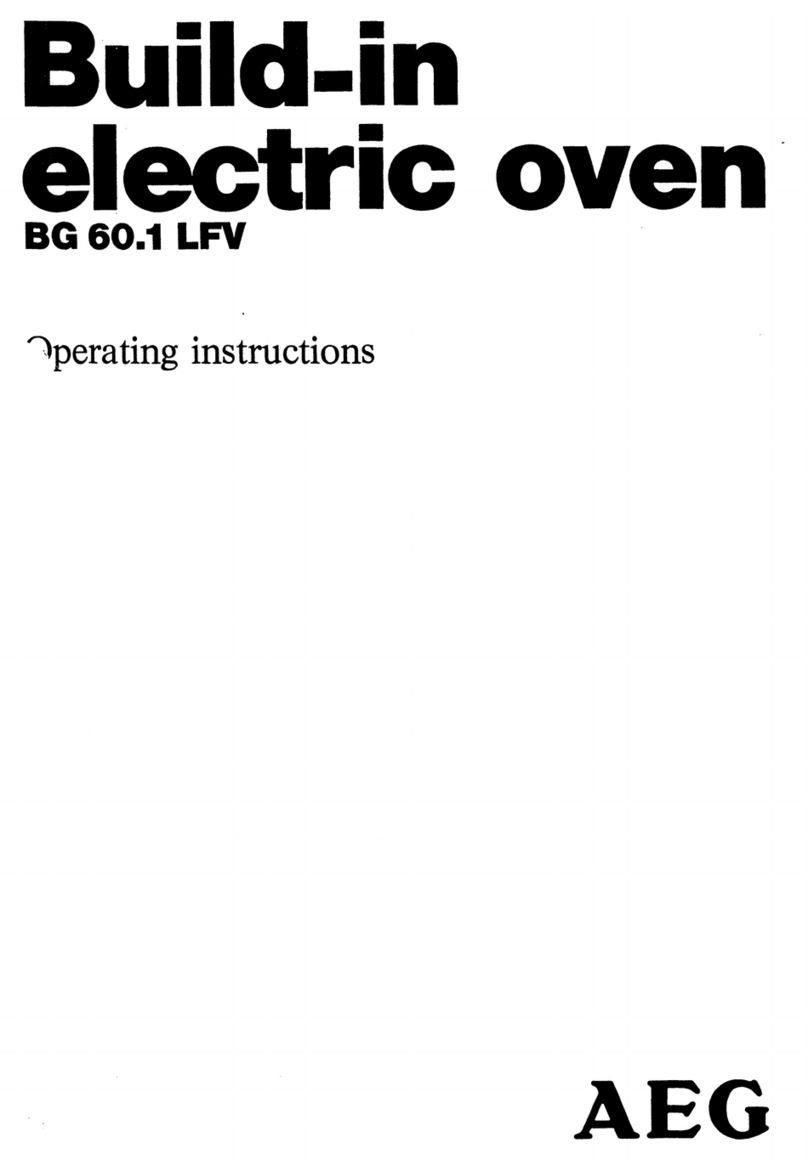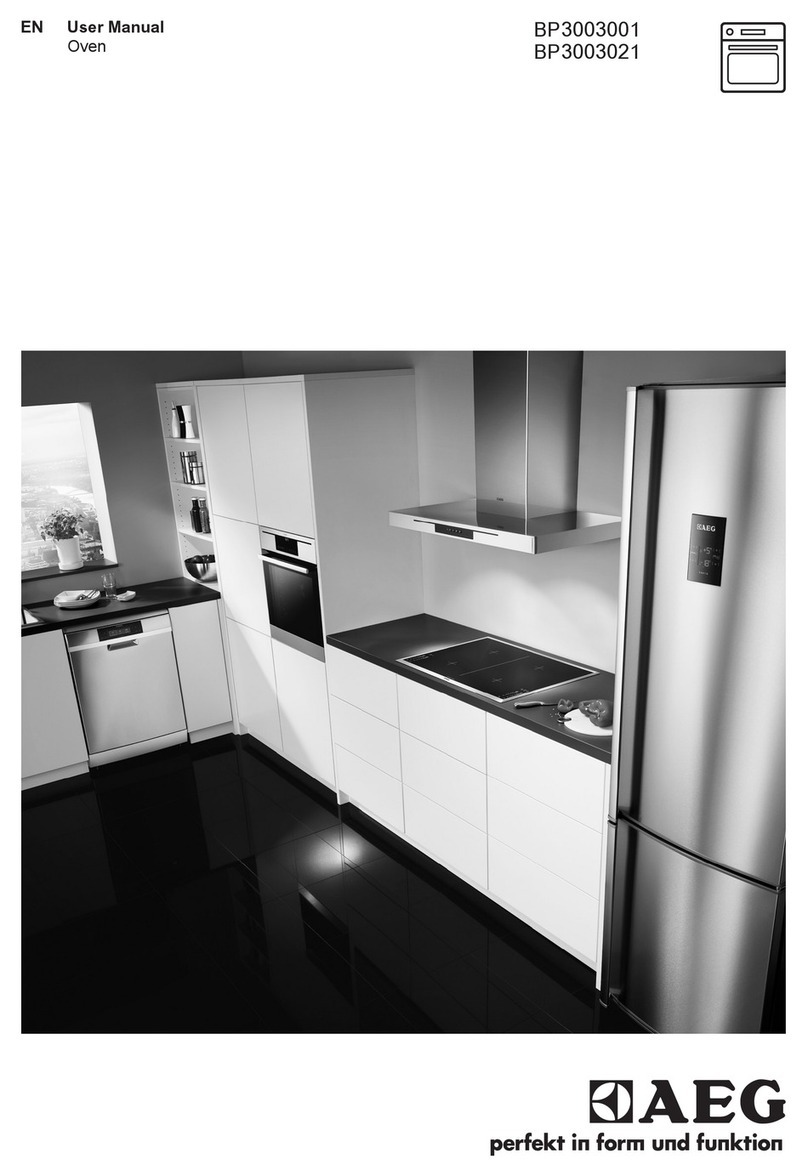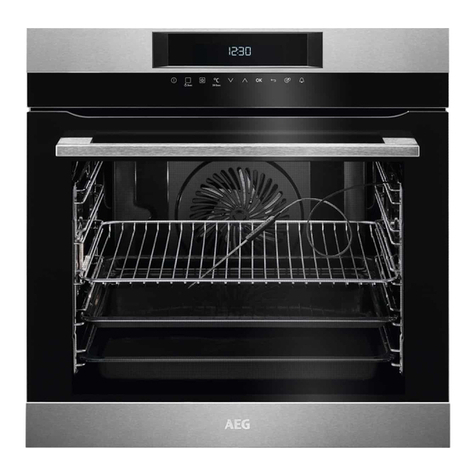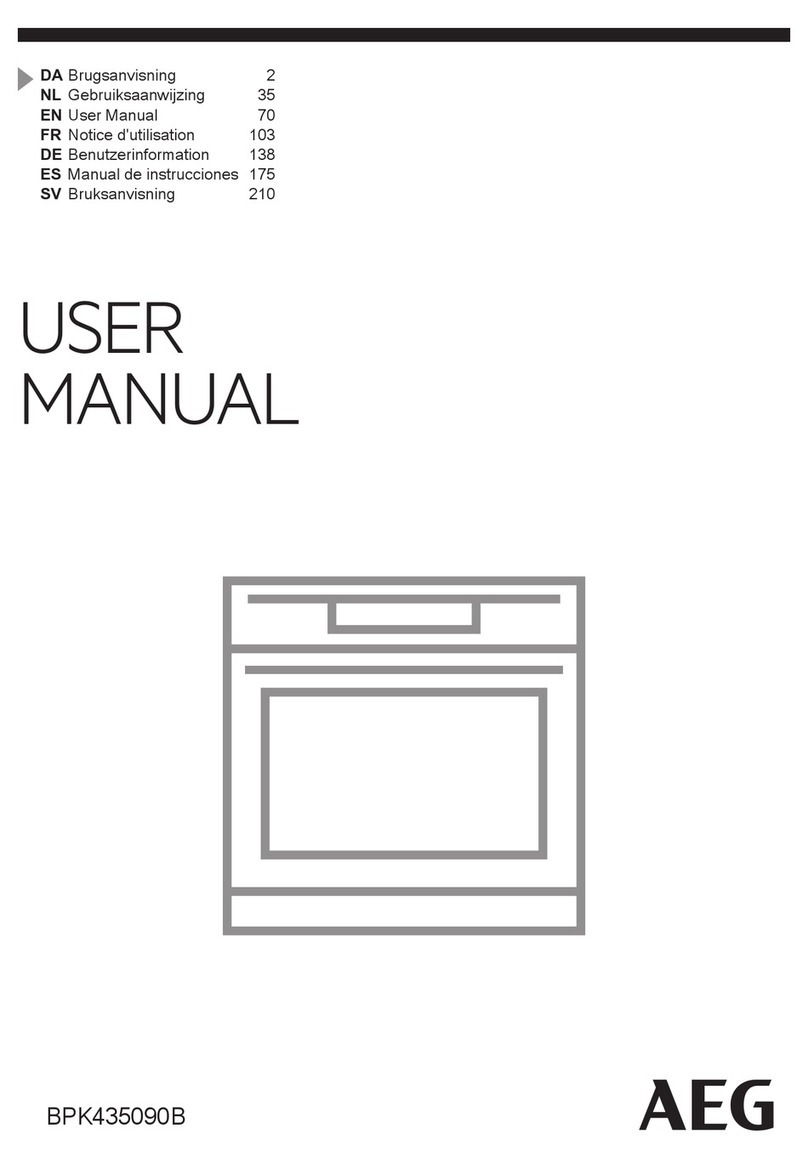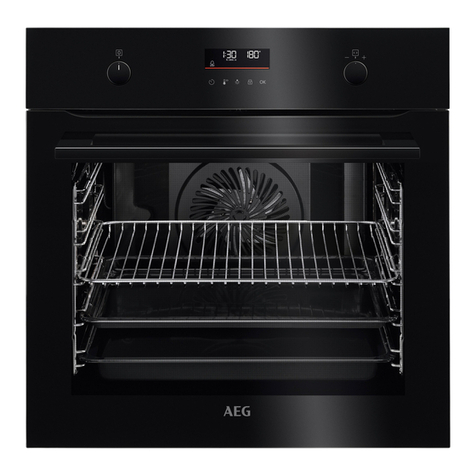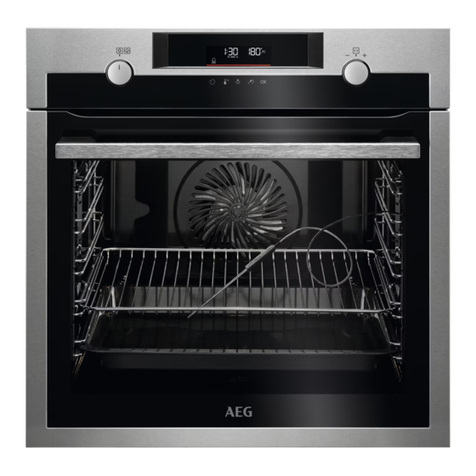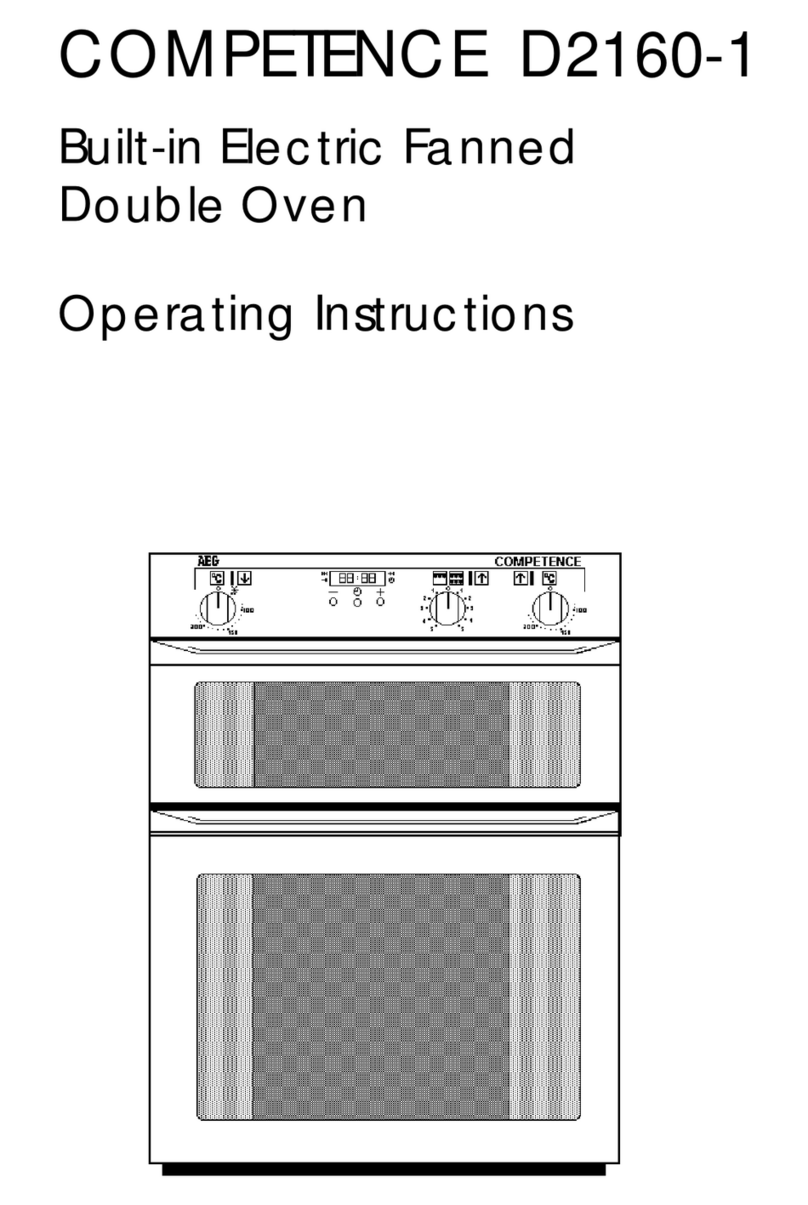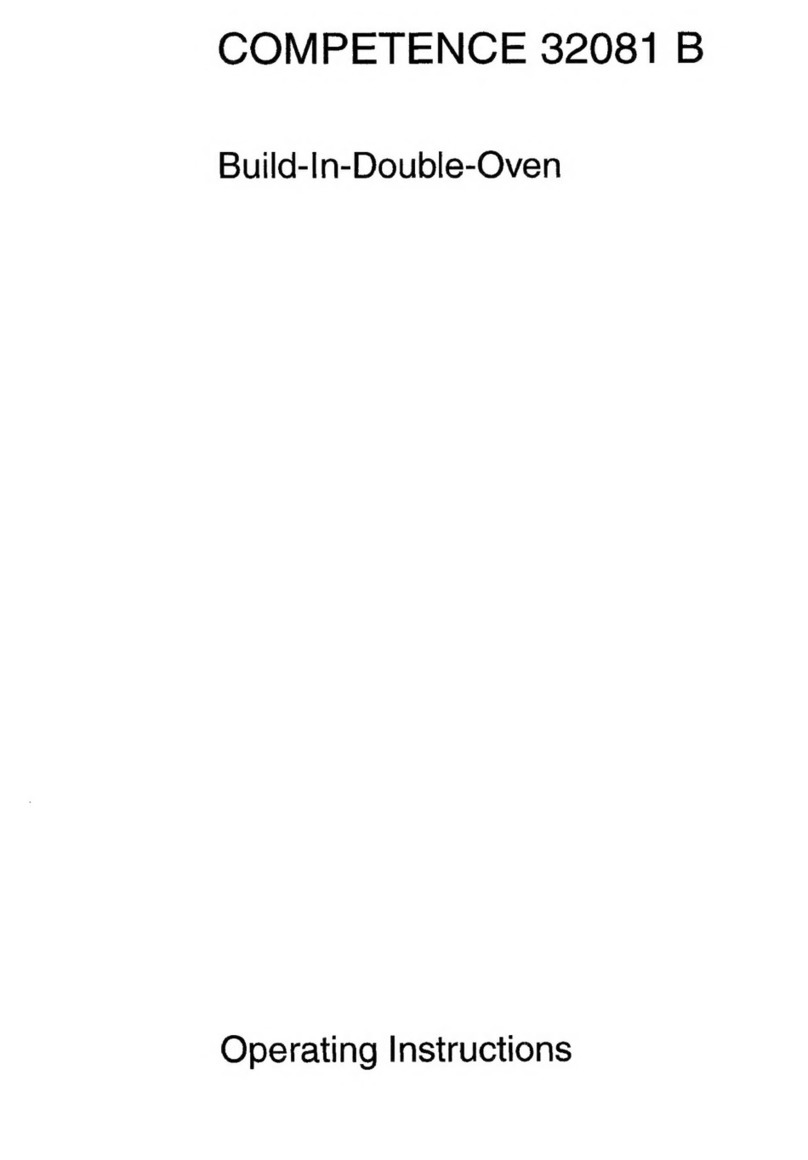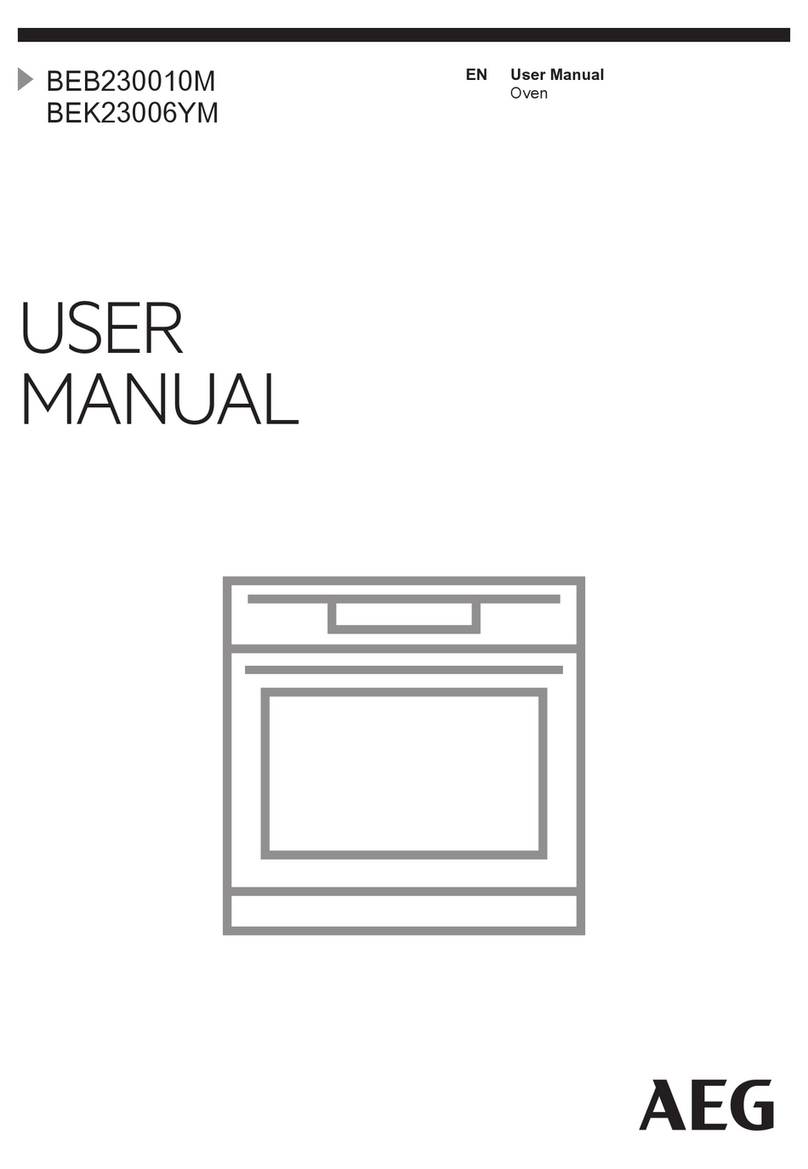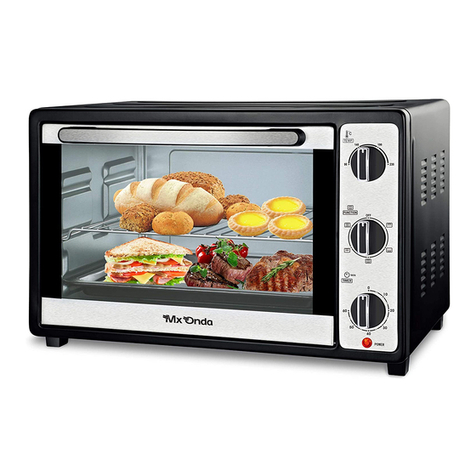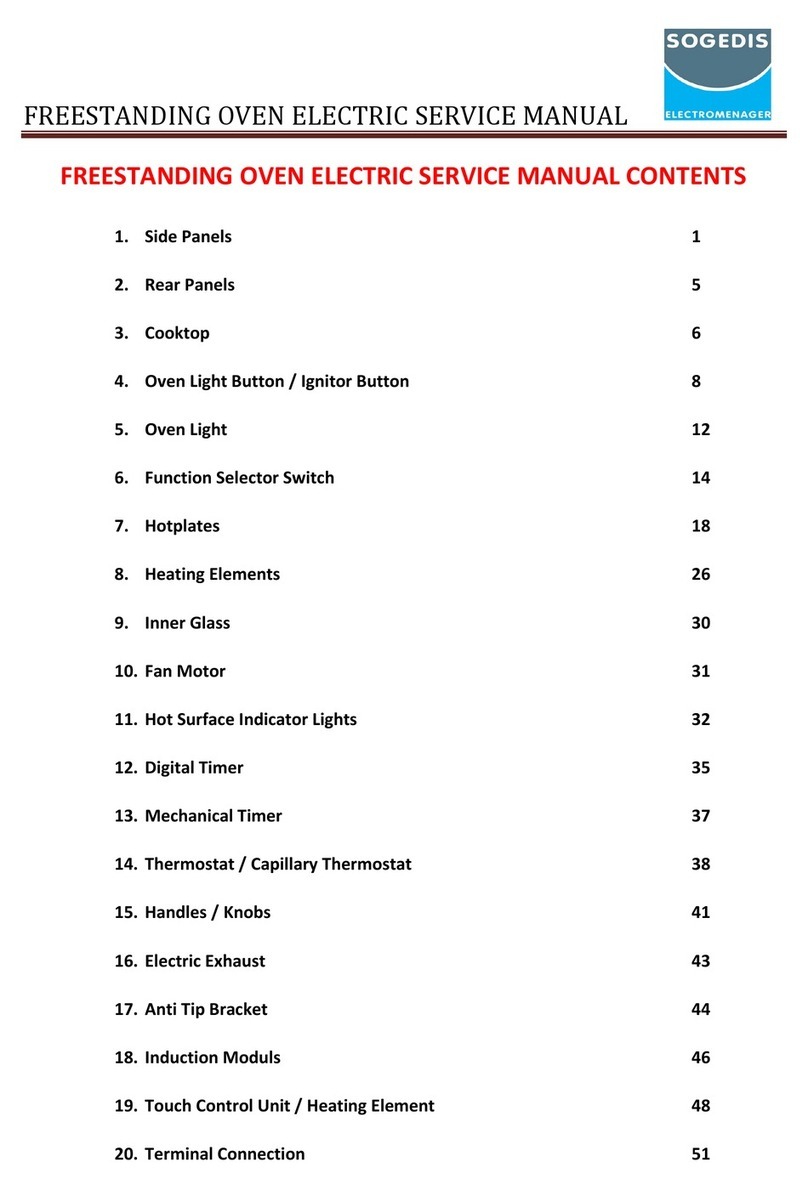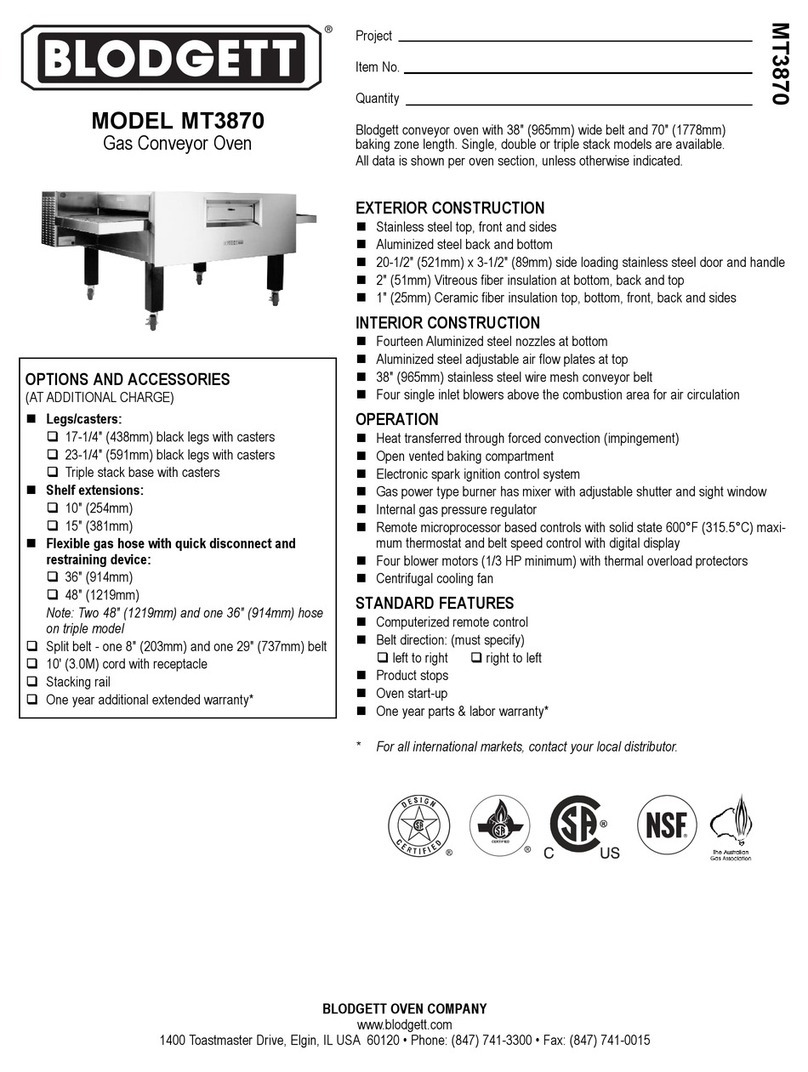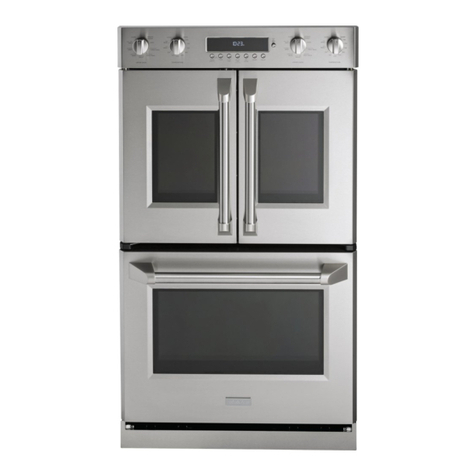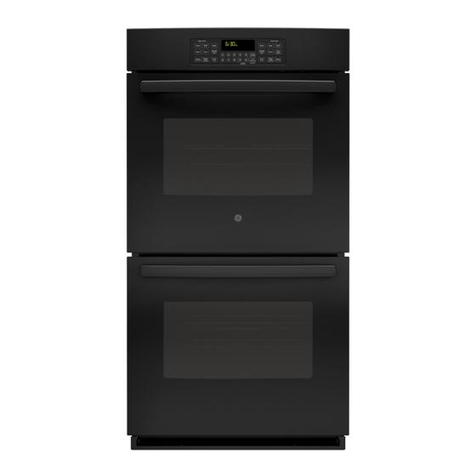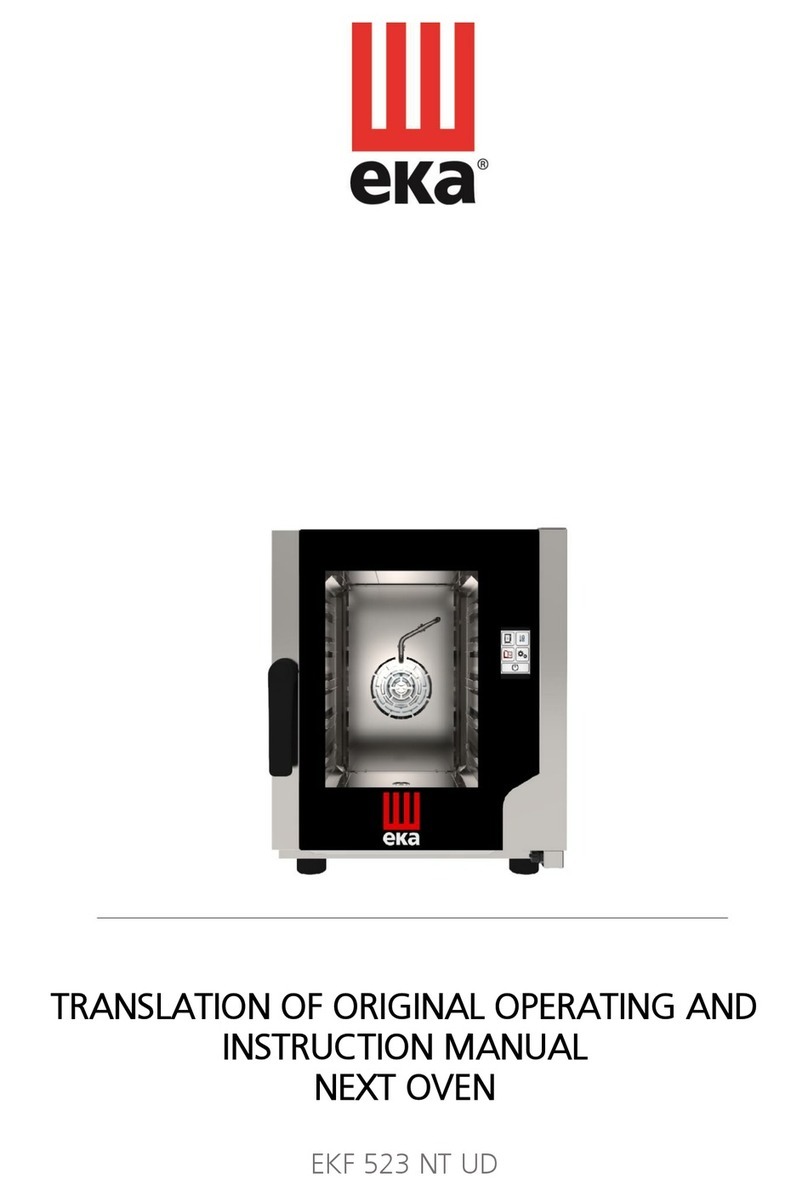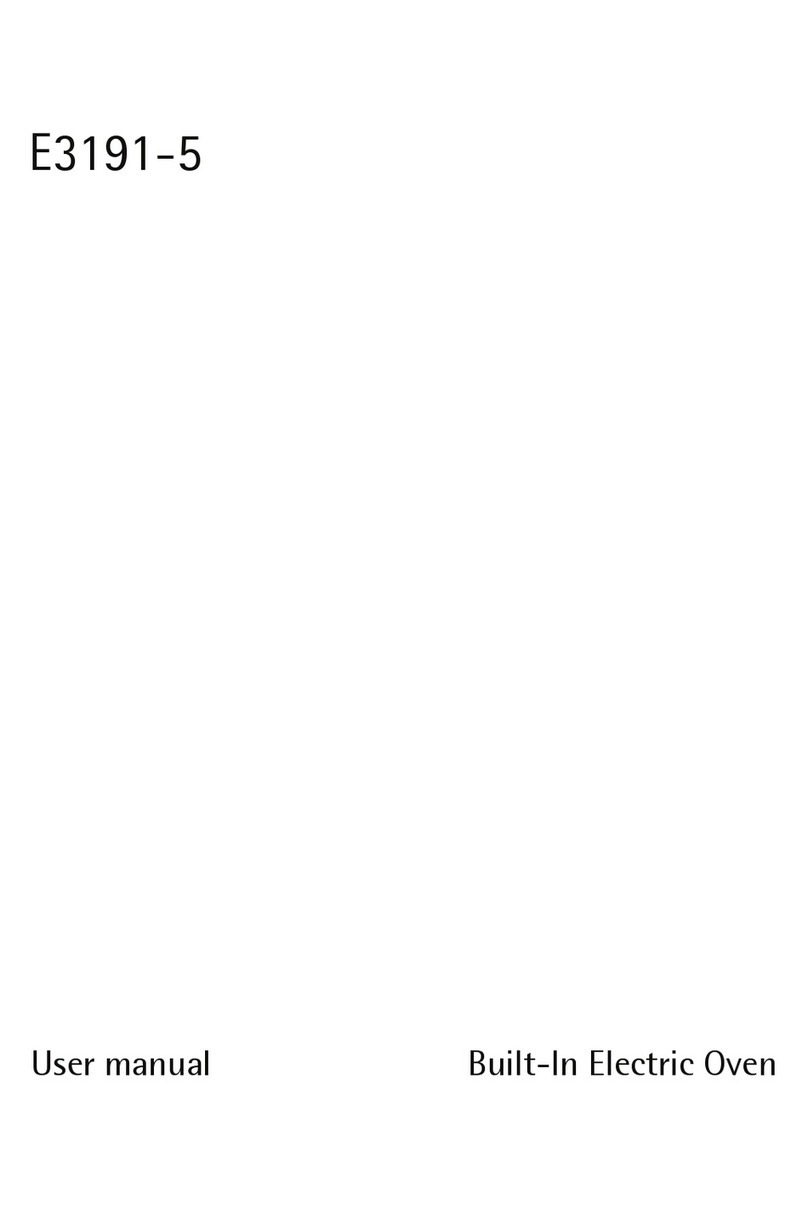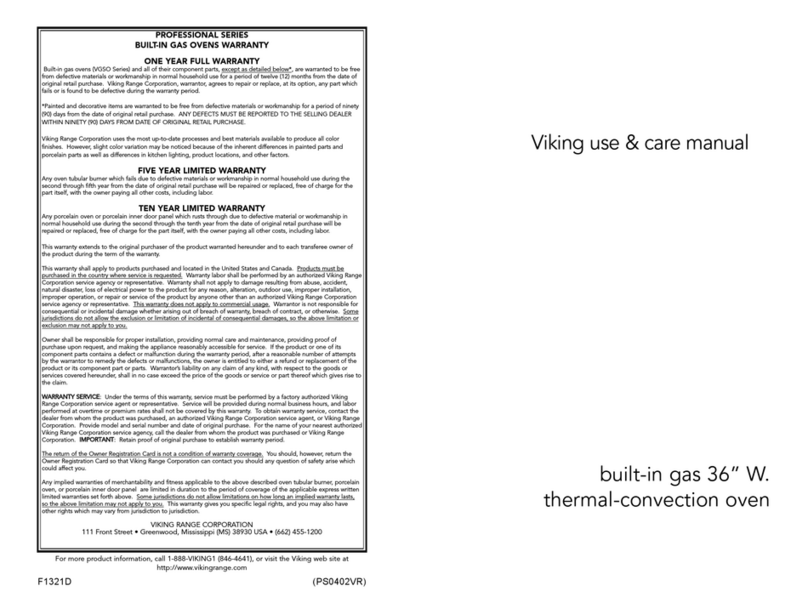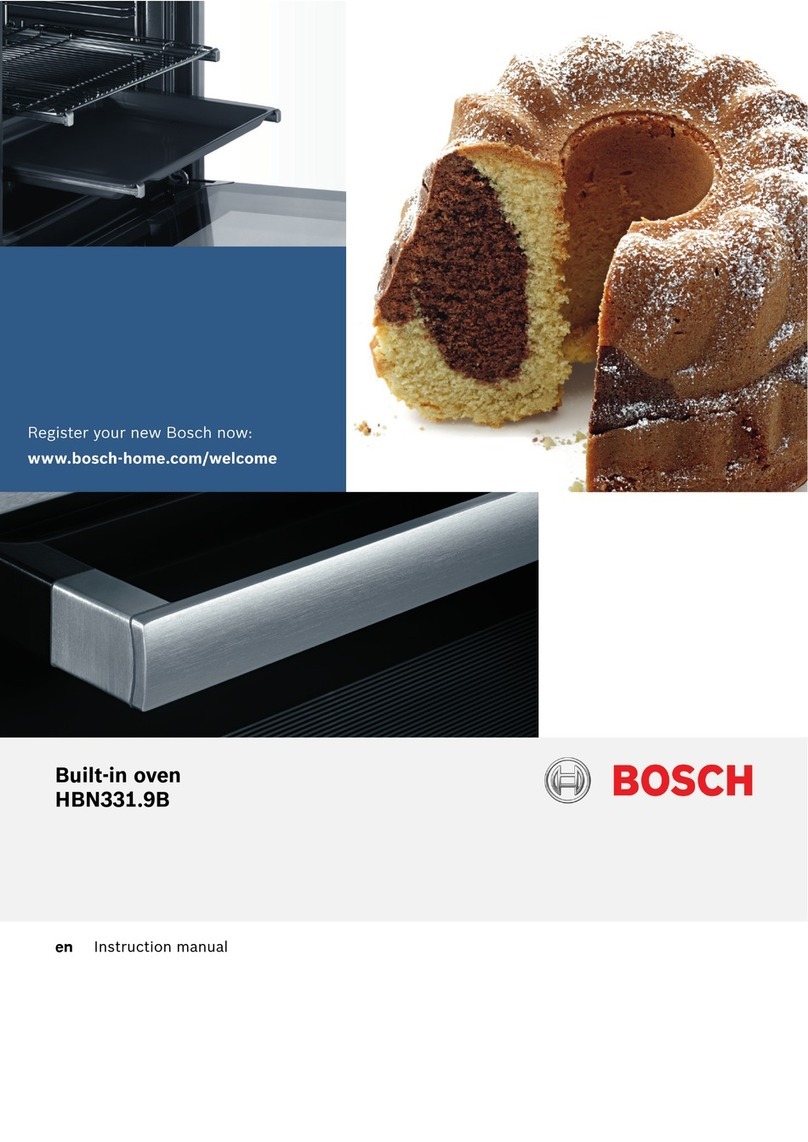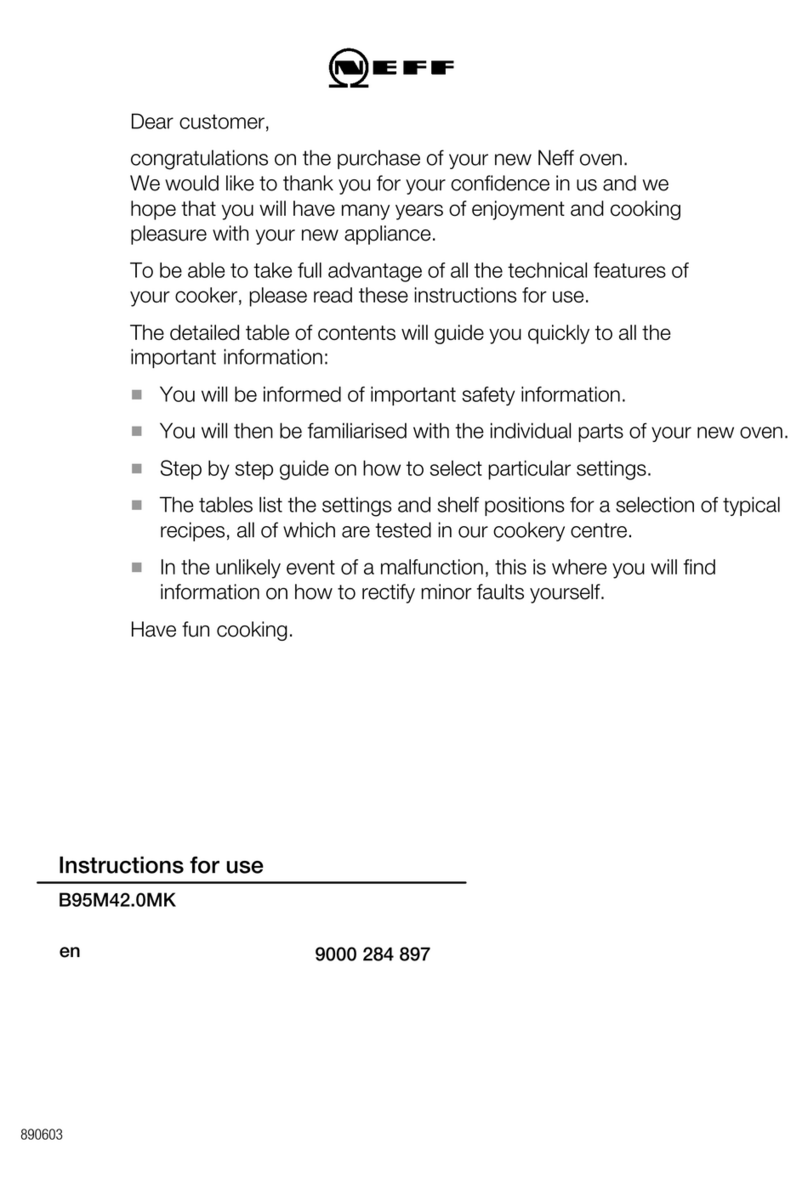
2.3 Switching the oven ON / OFF
Touch and release button 3 (on/off button), the timer display shows “On”.After two sec the
oven light and the program display are on. If after one minute a cooking program is not
activated, the oven light switches OFF and the oven goes in off position and the display
shows “OFF”. During cooking, to turn off the oven, touch and release the button 3.
3.1 Minute minder
This function does not interact with the settings, and is always available regardless of the
status of the oven.
Press button 6; the bell symbol is lit. Set the time using buttons 4 and 5 (+ and -), up to a
maximum of 180 minutes. After 4 seconds the information is accepted and the bell remains
lit.
Pressing button 6 after changing the value brings back to a timer clock mode, accepting the
value you just changed.
When the time has elapsed, a tone sounds combined with the bell symbol flashing. To end
both signals simply press any button.
During the minute minder setting step, it is possible to cancel the current value by pressing
button 3.
3.2 Manual cooking
Switch on the oven as per the paragraph 2.3. Select the oven function, the oven temperature
is suggested by default, but can be changed by pressing buttons 1 and 2 (+ and -).
3.3 Automatic cooking modes - Based on setting the duration “DUR”
Use automatic cooking to automatically turn the oven on, cook, and then turn the oven off.
1. Check the clock shows the correct time.
2. Select the function and temperature. The oven will come on.
3. Decide how long the food will take to cook.
4. Select “dur” (duration) on the clock/programmer display by using the “ ” key and then,
with “90’”flashing on the central display, touch “ ” or “ ” keys to set the time in
minutes (maximum 180 minutes - 3 hours). To reset the cooking time touch the “ ” key.
5. Decide the time you would like the oven to turn off; select “End” on the clock/programmer
display by using the “ ” key and then, with the time flashing on the central display,
touch the “ ” or “ ” keys to set the end of cooking time (touch “ ” key to change
between hours and minutes).
If there is time to wait before cooking starts, “A” will show in the clock /programmer display
and the oven will switch off but is now set for automatic cooking.
If you are already at home to turn the oven on and only want the oven to turn off
automatically, start cooking as normal, then follow step 4 or step 5 to set a time to stop the
oven.
When automatic cooking starts, “ ” will be displayed and the oven will turn on.
–To see the remaining cook time, follow step 4 up to display “dur” (duration).
–To see the set stop time, follow step 5 up to display “End”.
–To cancel automatic or semi-automatic cooking at any time see chapter “CANCELLING A
SET PROGRAMME”.
When the stop time is reached the timer will beep, “A” and “ ” will flash:
–Touch any key to stop the beeping.
–The oven will turn off on the “OVEN LIGHT” function.
–Turn OFF the oven as indicated in the “TURNING THE OVEN ON AND OFF” chapter.

